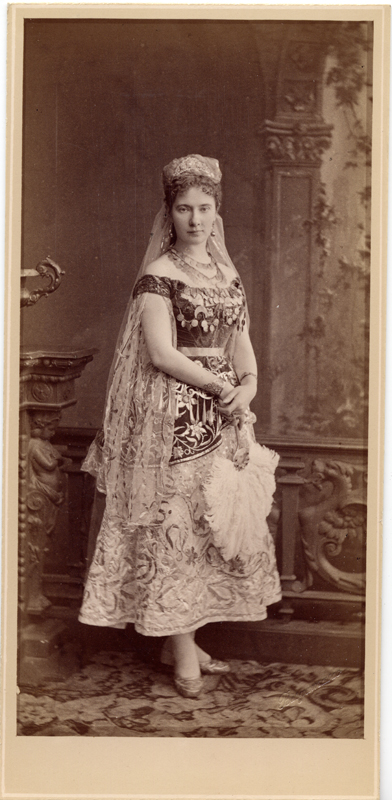Grand Ballet in four acts and seven scenes
Music by Ludwig Minkus
World Première
13th February [O.S. 1st February] 1881
Imperial Bolshoi Kamenny Theatre, Saint Petersburg
Original 1881 Cast
Zoraya
Ekaterina Vazem
Plot
Solimon, the adopted son of Caliph Abderraman, is in love with Zoraya, the Caliph’s daughter. Zoraya reciprocates his love, but is horrified to learn that her father has arranged for her to marry Tamarat, the leader of an African tribe. During the ceremonial procession, a despairing Solimon throws himself beneath the chariot carrying Tamarat and Zoraya, but his tutor, who is a famous physician, saves his life. Solimon has a dream full of wonderful visions in which Zoraya is a houri of paradise. Zoraya has indeed come in secret to visit her beloved. Hearing steps, she hides and hears Tamarat trying to persuade some vagrants to kill Solimon. When they refuse, Tamarat, himself, goes to attack his sleeping rival, but Zoraya’s appearance stops him. Outraged by Tamarat’s wickedness, the Caliph banishes him and gives his consent for Zoraya and Solimon to marry.

History
Zoraya, the Moorish Girl in Spain marks an interesting reformulation of Petipa’s ideas. Staged four years after La Bayadère and twelve years after Don Quixote, the ballet presented a combination of both elements that had made the two previous ballets so successful – an Oriental story, but set in a context that allowed for the exploitation of the Spanish ideas that were tied to Petipa’s experience and training from his years spent in Spain. The majority of Minkus’s score reflected the Iberian character suggested by the period of the Moorish occupation of Spain from 710-1492, a period when so much of the temperament and style of Spanish dance and music were imbibed from the Afro-Arabic culture of the Zegris and Abencerage in Granada, the last Muslim state in Spain (1232-1492).
Zoraya, the Moorish Girl in Spain was premièred on the 13th February [O.S. 1st February] 1881 at the Imperial Bolshoi Kamenny Theatre, with Ekaterina Vazem in the title role. Among those who attended the première was Tchaikovsky, despite the emotional strain of the rehearsals for his opera The Maid of Orleans.

Related pages
Photo gallery
Sources
- Letellier, Robert Ignatius (2008) The Ballets of Ludwig Minkus. Cambridge Scholars Publishing
Photos and images: © Dansmuseet, Stockholm © Большой театр России © Victoria and Albert Museum, London © Государственный академический Мариинский театр © CNCS/Pascal François © Bibliothèque nationale de France © Musée l’Opéra © Colette Masson/Roger-Viollet © АРБ имени А. Я. Вагановой © Михаил Логвинов © Михайловский театр, фотограф Стас Левшин. Партнёры проекта: СПбГБУК «Санкт-Петербургская государственная Театральная библиотека». ФГБОУВО «Академия русского балета имени А. Я. Вагановой» СПбГБУК «Михайловский театр». Михаил Логвинов, фотограф. Martine Kahane.
